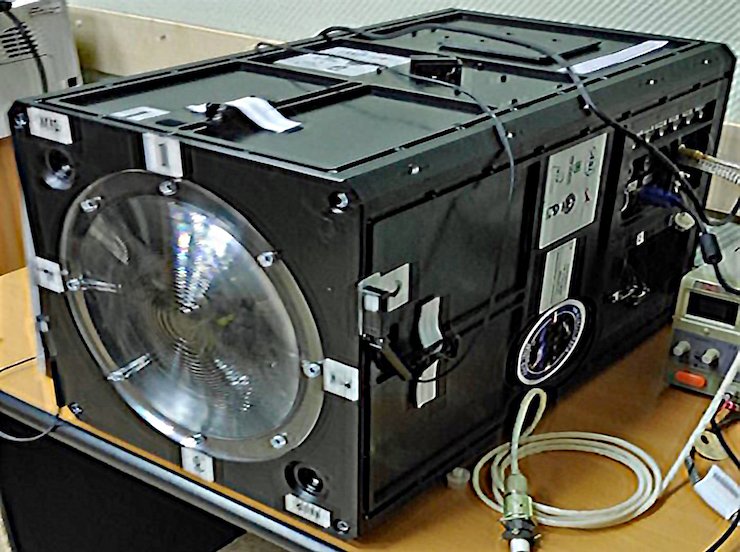Italy’s National Institute for Nuclear physics (INFN) has used 3D printing to produce the mechanical structure of a UV telescope, which was recently sent to the International Space Station (ISS).
Over the next three years, the Italian Space Agency (ASI) and Russian Space Agency (Roscosmos) will use the 3D printed Mini-EUSO telescope to analyze UV emissions from the ISS. The aim of the project is to gain a better understanding of cosmic rays and to lay the technological groundwork for future missions to the space station.
“Using Stratasys FDM 3D printing throughout the production of the Mini-EUSO’s mechanical structure enables us to reduce the overall cost of the project,” said Marco Ricci, Lead Researcher at Laboratori Nazionali di Frascati INFN and INFN Country Manager for Collaboration EUSO SPB2 Italia.
“It’s an incredible outcome for us that I have to say I never expected from 3D printing.”

3D printing a space telescope
The space telescope was sent to the ISS to create a high-resolution map of Earth within the UV range (300-400 nm). To do so successfully, the device needed to be capable of withstanding the mechanical stresses and vibrations of being launched into space by a Soyuz rocket.
Utilizing Stratasys’ Fortus 450mc 3D printer and ULTEM 9085 material, the INFN team was able to create a structure to meet strict aerospace and ISS certification requirements. The resulting mechanical frame of the telescope proved to be lighter than the aluminum version and has improved insulation for interior electrical currents than its predecessor.
Laboratori Nazionali di Frascati (LNF) has several Stratasys FDM machines at its Italian base and recently installed PolyJet capability. According to Ricci, LNF researchers used this technology to reduce costs by a factor of ten, and development time by around a year.
Due to its high time resolution of 2.5 us, the Mini-EUSO is capable of detecting a wide range of UV phenomena in the Earth’s atmosphere. Having been successfully installed on the ISS’ low orbit Russian Zvezda module, data is already being sent back to Earth for analysis.
“We are now in the process of analysing the first data recorded by Mini-EUSO and the results are very promising,” added Ricci. “From a researcher’s perspective, I’m extremely proud of the way the project was executed and very excited with the achievements. For me, it’s clear now how 3D printing can significantly contribute towards the future success and technological progress of scientific research.”

Additive manufacturing aboard the ISS
3D printing technology has been applied in varying ways to optimize operations onboard the ISS and to further its research objectives.
Californian off-world manufacturer Made In Space (MIS) was awarded a NASA Small Business Innovation Research (SBIR) contract in May 2018 to develop its Vulcan Hybrid 3D printer. The system is compatible with more than 30 different materials covering both polymers and metals and capable of producing durable high-precision components in orbit.
MIS and Brazilian petrochemical company Braskem created a 3D printed plastic recycling facility for the ISS in October 2019. The ‘Braskem recycler’ aims to improve the sustainability of the station’s manufacturing capabilities, and reduce the number of resupply missions from Earth.
Israeli 3D printer manufacturer Nanodimension received grant approval from the Israel Innovation Authority in May 2019 to develop radio frequency (RF) space systems for the ISS. Working with Floridian communications company Harris Corporation, the project used its ground-based satellite tracking station to make contact with 3D printed RF systems.
The nominations for the 2020 3D Printing Industry Awards are now open. Who do you think should make the shortlists for this year’s show? Have your say now.
Subscribe to the 3D Printing Industry newsletter for the latest news in additive manufacturing. You can also stay connected by following us on Twitter and liking us on Facebook.
Looking for a career in additive manufacturing? Visit 3D Printing Jobs for a selection of roles in the industry.
Featured image shows the Cosmic-ray watchtower aboard the International Space Station. Photo via NASA.



